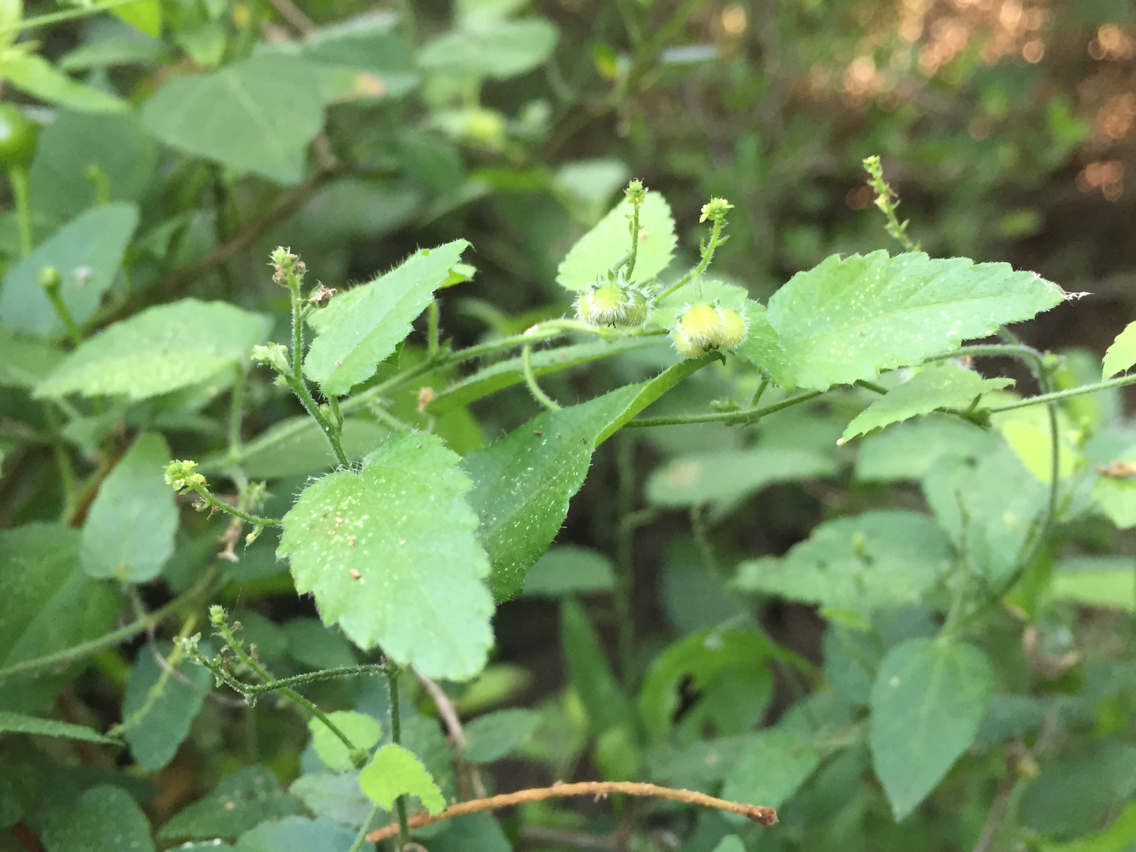Brush Noseburn
(Tragia glanduligera)

Description
Subshrubs or vines, 3-10 dm. Stems trailing or twining, dark green, apex flexuous. Leaves: petiole 6-22 mm; blade narrowly ovate to lanceolate, 2.5-4 - 1.5-2 cm, base shallowly cordate to truncate, margins serrate to crenate, apex acute to acuminate. Inflorescences terminal (often appearing leaf-opposed), glands stipitate, prominent throughout, staminate flowers 10-30 per raceme; staminate bracts 0.5-1.5 mm. Pedicels: staminate 1-2 mm, persistent base 0.3-0.7 mm; pistillate 3-7 mm in fruit. Staminate flowers: sepals 3, green, 0.7-1.2 mm; stamens 3, filaments 0.2-0.4 mm. Pistillate flowers: sepals lanceolate, 0.7-1.5 mm; styles connate 1/3 length; stigmas smooth to undulate. Capsules 4-5 mm wide. Seeds dark brown to black, 1.9-2.2 mm.Flowering late spring; fruiting late summer-fall. Dry, sandy limestone soils, abandoned home sites and mesquite scrub; 10-80 m; Tex.; s, e Mexico; Central America (Guatemala).Southern Texas is the northernmost distribution of Tragia glanduligera. In Mexico, it is found in tropical deciduous forests in Campeche, Nuevo Le-n, Tabasco, Veracruz, and Yucatan. This species and T. jonesii are the only species in the flora area with stipitate glands on the inflorescence. Tragia glanduligera differs from T. jonesii by its leaf blade margins with 10-15 smaller teeth per side, shorter staminate pedicels, and truncate to weakly cordate leaf blade bases.
Taxonomic tree:







